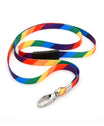Importance of Outdoor Safety
As a stay-at-home mom, getting your children outdoors can be a great way to bond, explore, and have fun. However, it's important to prioritize outdoor safety to ensure that everyone stays safe and protected. By understanding the benefits of outdoor activities and being aware of common outdoor hazards, you can create a safer environment for your family to enjoy the great outdoors.
Benefits of Outdoor Activities for Moms and Children
Spending time outdoors has numerous benefits for both moms and children. Here are a few reasons why outdoor activities are so important:
- Physical Health: Outdoor activities encourage children to be more active, which promotes healthy growth and development. For moms, outdoor activities provide an opportunity to engage in physical exercise and maintain personal fitness.
- Mental Health: Being in nature has been shown to reduce stress, improve mood, and increase overall mental well-being. It's a great way for moms to unwind and rejuvenate, while children can experience a sense of freedom and explore their surroundings.
- Socialization: Outdoor activities offer a chance for moms and children to interact with others in the community. Whether it's playing at a park or joining a nature group, these interactions can help develop social skills and create lasting friendships.
- Educational Opportunities: The great outdoors is a natural classroom, providing endless opportunities for learning. From identifying different plants and animals to learning about the environment, outdoor activities stimulate curiosity and promote a love for nature.
Common Outdoor Hazards
While outdoor activities offer numerous benefits, it's important to be aware of potential hazards. Here are a few common outdoor hazards to watch out for:
- Weather Conditions: Changes in weather can pose risks, such as extreme heat, thunderstorms, or cold temperatures. It's essential to check weather conditions before heading outdoors and dress appropriately for any situation.
- Tripping and Falling: Outdoor environments can have uneven terrain, tree roots, and other obstacles that may increase the risk of trips and falls. It's important to choose safe locations with well-maintained paths and teach children to be cautious while exploring.
- Insect Bites: Mosquitoes, ticks, and other insects can transmit diseases. It's crucial to protect your family from bites by using insect repellent, wearing protective clothing, and checking for ticks after spending time outdoors.
- Water-related Accidents: Whether it's a swimming pool, lake, or beach, water can be dangerous for young children. Proper supervision, teaching swimming skills, and learning CPR are important measures to ensure water safety.
By understanding the benefits of outdoor activities and being aware of common hazards, you can take proactive steps to create a safe and enjoyable outdoor experience for your family. Stay tuned for the next section, where we'll discuss how to plan outdoor activities and ensure child safety.
Planning Outdoor Activities
Planning outdoor activities is an essential part of ensuring the safety of both you and your children. Taking the time to prepare and consider the following factors can greatly reduce the risk of accidents or mishaps during your outdoor adventures:
Choosing Safe Locations
When selecting a location for your outdoor activities, it's important to prioritize safety. Look for places that are well-maintained and have suitable facilities for children. Consider the following factors when choosing a location:
- Safety features: Look for parks or playgrounds with safety features such as fences, soft ground surfaces, and age-appropriate equipment.
- Cleanliness: Choose locations that are clean and free from hazards like broken glass or sharp objects.
- Traffic-free zones: Opt for areas that are away from busy roads or have designated traffic-free spaces.
- Proximity to help: Select locations close to medical facilities or emergency services in case of any unforeseen accidents.
Checking Weather Conditions
Checking the weather forecast before heading out is an essential step in planning your outdoor activities. Unfavorable weather conditions can pose risks such as lightning, extreme heat or cold, or heavy rain. Consider the following tips when checking the weather:
- Temperature: Dress yourself and your children appropriately for the weather. Layer clothing to adjust for changing temperatures.
- Precipitation: If rain is predicted, ensure you have appropriate rain gear such as umbrellas and raincoats.
- Extreme weather alerts: Stay updated on extreme weather alerts and postpone your plans if necessary.
- Sun exposure: Be mindful of the UV index and plan outdoor activities accordingly to prevent sunburns or heatstroke.
Preparing a First Aid Kit
No matter where you go, whether it's a short walk to the park or a day-long hike, having a well-stocked first aid kit is crucial. Here are some essential items to include in your kit:
- Band-Aids and adhesive bandages: These are useful for minor cuts, scrapes, and blisters.
- Antiseptic wipes or solution: Use these to clean wounds and prevent infections.
- Sterile gauze pads and adhesive tape: These can be used to dress larger wounds and stop bleeding.
- Tweezers and scissors: Helpful for removing splinters, cutting tape, or trimming bandages.
- Pain relievers: Include age-appropriate pain relievers such as acetaminophen or ibuprofen.
- Emergency contact information: Have a list of emergency phone numbers, including your pediatrician and nearest hospital.
By carefully selecting safe locations, checking weather conditions, and having a well-prepared first aid kit, you can ensure a safer and more enjoyable outdoor experience with your children.
Ensuring Child Safety
As a stay-at-home mom, keeping your child safe is your top priority, especially when spending time outdoors. Here are some essential tips to ensure your child's safety while enjoying outdoor activities:
Supervision and Boundaries
- Always keep a close eye on your child and have clear boundaries established for their play area.
- Encourage your child to stay within a designated area and establish visual markers or physical barriers to help them understand their boundaries.
- Consider using childproofing devices such as safety gates or fences to create a safe outdoor environment.
Teaching Stranger Danger Awareness
- Teach your child about stranger danger and the importance of not talking to or accepting anything from strangers.
- Role-play different scenarios with your child to help them recognize potentially dangerous situations.
- Emphasize that they should never go anywhere with someone they don't know, even if that person seems friendly.
Appropriate Protective Gear
- Ensure that your child wears the appropriate protective gear for different outdoor activities.
- When biking or skateboarding, make sure they wear a helmet that fits properly and is securely fastened.
- For activities like rollerblading or scootering, knee and elbow pads can provide additional protection.
"Child safety is of the utmost importance when spending time outdoors. By closely supervising your child, teaching them about stranger danger, and providing appropriate protective gear, you can ensure their safety and peace of mind while enjoying outdoor activities."
Now that you know how to ensure your child's safety outdoors, let's move on to the next topic: sun safety tips.
Sun Safety Tips
When you and your children spend time outdoors, it's important to prioritize sun safety to protect your skin from harmful UV rays. Here are some tips to keep in mind:1. Applying Sunscreen Properly
- Apply sunscreen with a sun protection factor (SPF) of at least 30, even on cloudy days. Use a broad-spectrum sunscreen that protects against both UVA and UVB rays.
- Apply sunscreen 20 minutes before going outside. Don't forget to cover commonly overlooked areas like the neck, ears, and the back of the hands.
- Reapply sunscreen every two hours, or sooner if you have been sweating or swimming.
2. Wearing Sun-Protective Clothing
- Dress yourself and your children in lightweight, loose-fitting clothing that covers the skin. Look for clothing with a tight weave or UPF (Ultraviolet Protection Factor) rating for added sun protection.
- Wear a wide-brimmed hat that shades your face, ears, and neck. Opt for hats with a UPF rating for extra protection.
- Wear sunglasses with UV protection to shield your eyes from the sun's harmful rays.
3. Staying Hydrated
- Hydration is essential, especially when spending time in the sun. Drink plenty of water before, during, and after outdoor activities.
- Encourage your children to drink water regularly, even if they don't feel thirsty. Pack water bottles and remind them to take sips frequently.
Remember, sun safety is not just for sunny summer days. UV rays can still penetrate through clouds, so it's important to protect your skin all year round.
"Protecting your skin from the sun's harmful rays is essential for preventing sunburns, premature aging, and lowering the risk of skin cancer."
Enjoy your time outdoors while also prioritizing your health and the health of your children.
Preventing Insect Bites
As a mom, you want to make sure that your outdoor activities with your children are not only fun but also safe. One important aspect of outdoor safety is protecting your little ones from pesky insects and the potential dangers they can bring. Insect bites can be itchy, painful, and even carry diseases. Here are some top tips to help you prevent insect bites and keep your family protected:
Using Insect Repellent
- Look for insect repellents that contain DEET, picaridin, or oil of lemon eucalyptus as these are most effective in warding off insects.
- Apply the repellent to exposed skin and clothing, following the instructions on the label. Be sure to avoid applying it to your child's hands, eyes, and mouth.
- Reapply the repellent as necessary, especially if your child has been sweating or swimming.
Wearing Protective Clothing
- Dress your children in light-colored, long-sleeved shirts and long pants. This will help minimize their exposure to insects.
- Tuck pant legs into socks or shoes to prevent insects from crawling up the legs.
- Consider using mosquito nets over strollers or baby carriers when outdoors.
Checking for Ticks
- After spending time outdoors, do a thorough tick check on yourself and your children. Ticks are commonly found in wooded and grassy areas.
- Look for ticks on the scalp, behind the ears, under the arms, in the groin area, and around the waistband.
- Use fine-tipped tweezers to remove any ticks you find. Grasp the tick as close to the skin as possible and pull straight up with steady pressure.
Remember, prevention is key when it comes to insect bites. By taking these precautions, you can significantly reduce the risk of your family getting bitten and experiencing the discomfort that comes with it.
Water Safety
When it comes to outdoor activities, water activities are always a fun and refreshing option for stay-at-home moms and their children. However, it's important to prioritize water safety to ensure a worry-free and enjoyable experience. Here are some top tips to keep in mind:
1. Supervising Children Near Water
- Always keep a close eye on your children when they are in or near water, even if they know how to swim.
- Never leave them unattended, even for a moment. Drowning can happen quickly and silently.
2. Teaching Swimming Skills
- Consider enrolling your child in swimming lessons at a young age. Learning proper swimming techniques can increase their water safety.
- However, it's important to remember that swimming lessons are not a substitute for adult supervision.
3. Knowing CPR
- Being trained in CPR (Cardiopulmonary Resuscitation) can be a life-saving skill, especially in water-related emergencies.
- Consider taking a CPR course and refreshing your skills regularly.
"Water and air, the two essential fluids on which all life depends, have become global garbage cans." - Jacques Yves Cousteau
4. Having Safety Gear
- Make sure your child wears a properly fitted life jacket when participating in water activities, especially if they are not strong swimmers.
- Use appropriate flotation devices approved by a certified organization.
5. Checking Water Conditions
- Before allowing your child to swim in a natural body of water, such as a lake or river, check the water conditions.
- Look for signs of strong currents, cold temperatures, or pollutants that may pose a risk to their health.
6. Establishing Water Rules
- Set clear boundaries and rules for water activities with your children.
- Teach them to stay away from deep water and to avoid diving into unknown areas.
Remember, water safety is crucial, so it's essential to stay vigilant and informed about potential risks.
Have fun, stay safe, and enjoy your water adventures!
Emergency Preparedness
When it comes to outdoor safety for stay-at-home moms, being prepared for emergencies is crucial. No one likes to think about worst-case scenarios, but taking the time to plan and prepare can make all the difference in an emergency situation. Here are some key tips for emergency preparedness:
Knowing Emergency Numbers
Make sure you have important emergency numbers programmed into your phone and written down in a easily accessible place. These numbers may include:
- Local emergency services (police, fire, ambulance)
- Poison control center
- Pediatrician's office
- Closest hospital or urgent care center
In a time of crisis, having these numbers readily available can save valuable seconds or even minutes.
Pro tip: Consider creating a laminated card with emergency numbers and keep it in your wallet or purse in case your phone is not available or has no battery.
Creating a Safety Plan
It's important to have a safety plan in place to help you and your family respond effectively to emergencies. Here are some steps to consider when creating a safety plan:
- Identify safe areas: Determine the safest spots in your home or the outdoor location where you spend most of your time.
- Establish meeting points: Choose a meeting point both inside and outside your home where everyone can gather in case of an emergency.
- Communicate with your children: Teach your children what to do in different emergency situations. Practice drills regularly to ensure they understand and remember the safety procedures.
- Establish an emergency contact: Choose a trusted family member or friend who lives outside your immediate area to be your family's emergency contact. Make sure everyone in your family knows this person's name and phone number.
Having a safety plan in place will help you and your family stay calm and organized in case of an emergency.
Pro tip: Practice your safety plan regularly so that everyone in your family knows what to do. This will help reduce panic and improve response times in real emergencies.
Carrying a Cell Phone
Bring your cell phone with you whenever you go outdoors with your children. In an emergency, being able to quickly call for help can be a lifesaver. Make sure your phone is fully charged before heading out and consider investing in a portable charger for longer outdoor excursions.
Pro tip: Save your own emergency contact information as ICE (In Case of Emergency) in your phone's contacts. This way, if someone finds your phone, they can easily reach out to your designated emergency contact.
By knowing your emergency numbers, creating a safety plan, and carrying a cell phone, you'll be well-prepared to handle any unexpected situations that may arise during your outdoor adventures.
Remember, the goal of emergency preparedness is not to instill fear but to empower you to respond effectively in case of an emergency. By taking these precautions, you can relax and enjoy your time outdoors with your children, knowing that you are prepared for whatever may come your way. Stay safe!
Self-Care for Moms
As a stay-at-home mom, taking care of your little ones and ensuring their safety outdoors is undoubtedly a top priority. However, amidst all the hustle and bustle, it is imperative not to forget about your own well-being. Taking care of yourself is just as important as taking care of your children. Here are some self-care tips to keep in mind while enjoying outdoor activities with your little ones:
Taking Breaks and Resting
- Remember to take breaks: It's easy to get caught up in the excitement of outdoor activities with your children, but remember to take regular breaks to rest and recharge. This will prevent exhaustion and help you maintain your energy levels throughout the day.
- Find a comfortable spot: When taking a break, find a shady spot where you can relax and rejuvenate. Bring a blanket or a foldable chair to make yourself comfortable while keeping an eye on your children.
- Make time for yourself: Take advantage of your children's nap time or quiet playtime to have a moment for yourself. Use this time to read a book, listen to music, or engage in any activity that helps you unwind and recharge.
Staying Hydrated and Nourished
- Drink plenty of water: Outdoor activities can be physically demanding, so it's essential to stay hydrated. Carry a water bottle with you and make sure to drink water regularly, especially on hot days.
- Pack nutritious snacks: Don't forget to bring healthy snacks for yourself. Pack fruits, granola bars, or nuts to keep your energy levels up. Remember, taking care of yourself also includes nourishing your body with nutritious food.
Protecting Against Outdoor Elements
- Apply sunscreen: Protect your skin from harmful UV rays by applying sunscreen before heading outdoors. Make sure to choose a broad-spectrum sunscreen with a high SPF and reapply it every two hours or more frequently if you are sweating or in the water.
- Wear a hat and sunglasses: Keep yourself protected from the sun by wearing a wide-brimmed hat and sunglasses. These accessories not only provide shade but also protect your face and eyes from the sun's harmful rays.
- Dress appropriately: Wear light and breathable clothing that covers your arms and legs to protect against sunburn. Opt for lightweight and moisture-wicking fabrics that will keep you comfortable even on hot days.
- Protect against bugs: Use insect repellent to keep mosquitoes and other bugs at bay. Look for repellents with DEET or other EPA-approved ingredients for maximum effectiveness. Additionally, wear long-sleeved shirts, long pants, and socks to minimize exposure to insects.
- Take precautions against allergies: If you or your children have allergies to pollen or certain plants, consider taking antihistamines or using nasal sprays to prevent allergic reactions. Consult with your doctor for the appropriate medication.
Remember, taking care of yourself is not selfish; it's necessary to be the best version of yourself for your children. By prioritizing self-care and following these tips, you can enjoy outdoor activities with your little ones while ensuring your own well-being. So go ahead, savor those precious moments with your children, and don't forget to take care of yourself along the way.
Conclusion
In conclusion, prioritizing outdoor safety as a stay-at-home mom is crucial for your well-being and the safety of your children. By following these top tips and precautions, you can ensure a memorable and safe outdoor experience for the whole family. Remember to:
- Choose safe locations for your outdoor activities and check weather conditions beforehand.
- Prepare a first aid kit and teach your children basic first aid techniques.
- Supervise your children and set clear boundaries to keep them safe.
- Teach them about stranger danger and provide them with appropriate protective gear.
- Apply sunscreen properly, wear sun-protective clothing, and stay hydrated to protect against the harmful effects of the sun.
- Use insect repellent, wear protective clothing, and check for ticks to prevent insect bites.
- Supervise children near water, teach them swimming skills, and know CPR.
- Be prepared for emergencies by knowing emergency numbers, creating a safety plan, and carrying a cell phone.
- Take care of yourself by taking breaks, staying hydrated and nourished, and protecting yourself against outdoor elements.
At Empowered by Ashley, we understand the importance of personal safety, and our mission is to help individuals feel safe, reassured, and secure. Check out our best-selling Personal Safety Alarm, designed to deter attackers and provide peace of mind. Visit our website at empoweredbyashley.com to learn more about our products and how we can empower you to stay safe both indoors and outdoors.
Remember, outdoor safety is a priority, but with the right precautions and knowledge, you can create wonderful memories and enjoy quality time with your children in the great outdoors. Stay safe and have fun!
Frequently Asked Questions
-
What are some outdoor safety tips for stay-at-home moms?
Some outdoor safety tips for stay-at-home moms include: 1. Always supervise children when they are playing outside, 2. Teach them about stranger danger and how to react in emergencies, 3. Dress them appropriately for the weather and apply sunscreen, 4. Inspect outdoor play areas for any hazards, and 5. Encourage the use of safety equipment like helmets and knee pads.
-
How can stay-at-home moms prevent accidents and injuries outside the home?
Stay-at-home moms can prevent accidents and injuries outside the home by: 1. Teaching children about road safety and the importance of looking both ways before crossing the street, 2. Keeping walkways and driveways clear of obstacles, 3. Installing a fence or gate to prevent children from wandering off, 4. Teaching children to stay away from unfamiliar animals, and 5. Being aware of potential dangers in parks or playgrounds.
-
What should stay-at-home moms do in case of an outdoor emergency?
In case of an outdoor emergency, stay-at-home moms should: 1. Stay calm and assess the situation, 2. Call emergency services if needed, 3. Administer basic first aid if trained, 4. Have a fully stocked first aid kit on hand, and 5. Teach children about emergency procedures and who to contact.
-
Are there any precautions stay-at-home moms should take during outdoor activities?
Yes, there are precautions stay-at-home moms should take during outdoor activities, including: 1. Checking weather conditions before heading outside, 2. Dressing children appropriately for the activity and applying insect repellent, 3. Hydrating regularly, 4. Avoiding outdoor activities during extreme heat or cold, and 5. Knowing the signs of heat exhaustion or hypothermia.
-
How can stay-at-home moms ensure the safety of their children when playing with pets outdoors?
To ensure the safety of children when playing with pets outdoors, stay-at-home moms should: 1. Teach children how to approach and interact with animals safely, 2. Supervise interactions between children and pets at all times, 3. Train pets to follow basic commands and prevent aggressive behaviors, 4. Keep vaccinations and flea/tick prevention up to date, and 5. Teach children to never approach unfamiliar animals without permission.
















Leave a comment
This site is protected by hCaptcha and the hCaptcha Privacy Policy and Terms of Service apply.